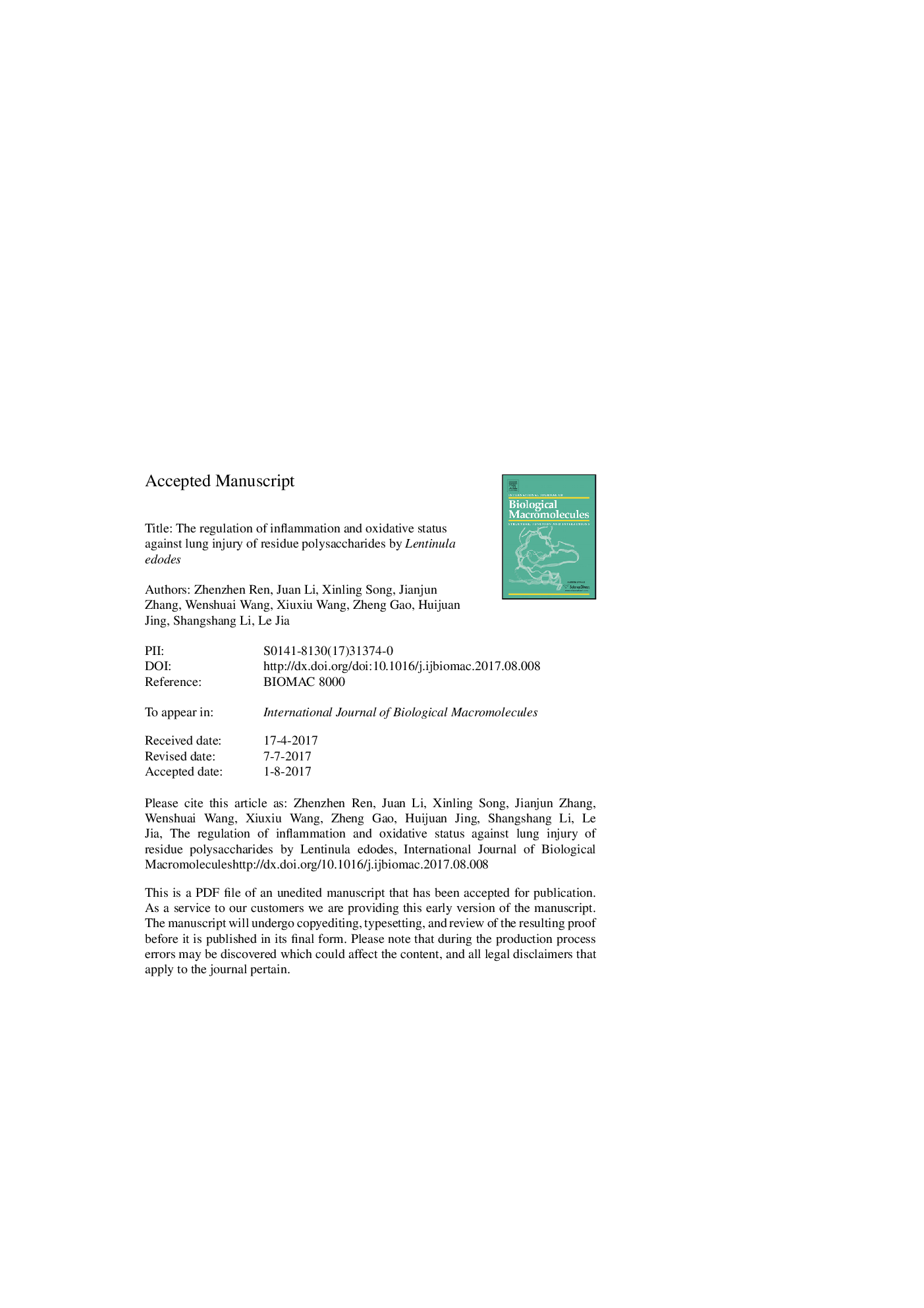| Article ID | Journal | Published Year | Pages | File Type |
|---|---|---|---|---|
| 8328957 | International Journal of Biological Macromolecules | 2018 | 31 Pages |
Abstract
In present study, two hydrolyzed residue polysaccharides (RPS) of enzymatic-RPS (ERPS) and acidic-RPS (ARPS) were successfully obtained from the residue of Lentinula edodes, and the anti-inflammatory as well as antioxidative effects on lipopolysaccharide-induced (LPS-induced) lung injured mice were investigated. The results demonstrated that ERPS showed superior lung protective effects by ameliorating the lung wet-to-dry weight (W/D) ratio, reducing the TNF-α, IL-6, and IL-1β levels in BALF, lowing the pulmonary MPO activity, decreasing the serum C3 and hs-CPR contents, as well as improving the antioxidant status by enhancing pulmonary enzyme activities (SOD, GSH-Px, CAT, and T-AOC) and eliminating the lipid peroxidation (MDA and LPO), respectively. These conclusions indicated that both RPS and its hydrolysates (ARPS and ERPS) might be suitable for functional foods and a potentially effective candidate medicine for the treatment of lung injury.
Keywords
RHAGSH peroxideLPOArabinoseXylhs-CRPCATIL-1βARPsERPsT-AOCMDADEXRPSIL-6LPS1,1-diphenyl-2-picrylhydrazylMPOGSH-PxROSLung injuryAntioxidative effectsAnti-inflammatory effectsinterleukin-6Interleukin-1βBALFtumor necrosis factor-alphaARARibDexamethasonerhamnoseRiboseSODSuperoxide dismutaseTotal antioxidant capacityTNF-αlipopolysaccharidemalondialdehydeMannoseBronchoalveolar lavage fluidMancomplement 3myeloperoxidaseLipid peroxidationhigh-sensitivity C-reactive proteinCatalaseGas chromatographyNormal controlPositive controlModel controlGalGalactoseXyloseGluGlucoseReactive oxygen species
Related Topics
Life Sciences
Biochemistry, Genetics and Molecular Biology
Biochemistry
Authors
Zhenzhen Ren, Juan Li, Xinling Song, Jianjun Zhang, Wenshuai Wang, Xiuxiu Wang, Zheng Gao, Huijuan Jing, Shangshang Li, Le Jia,
